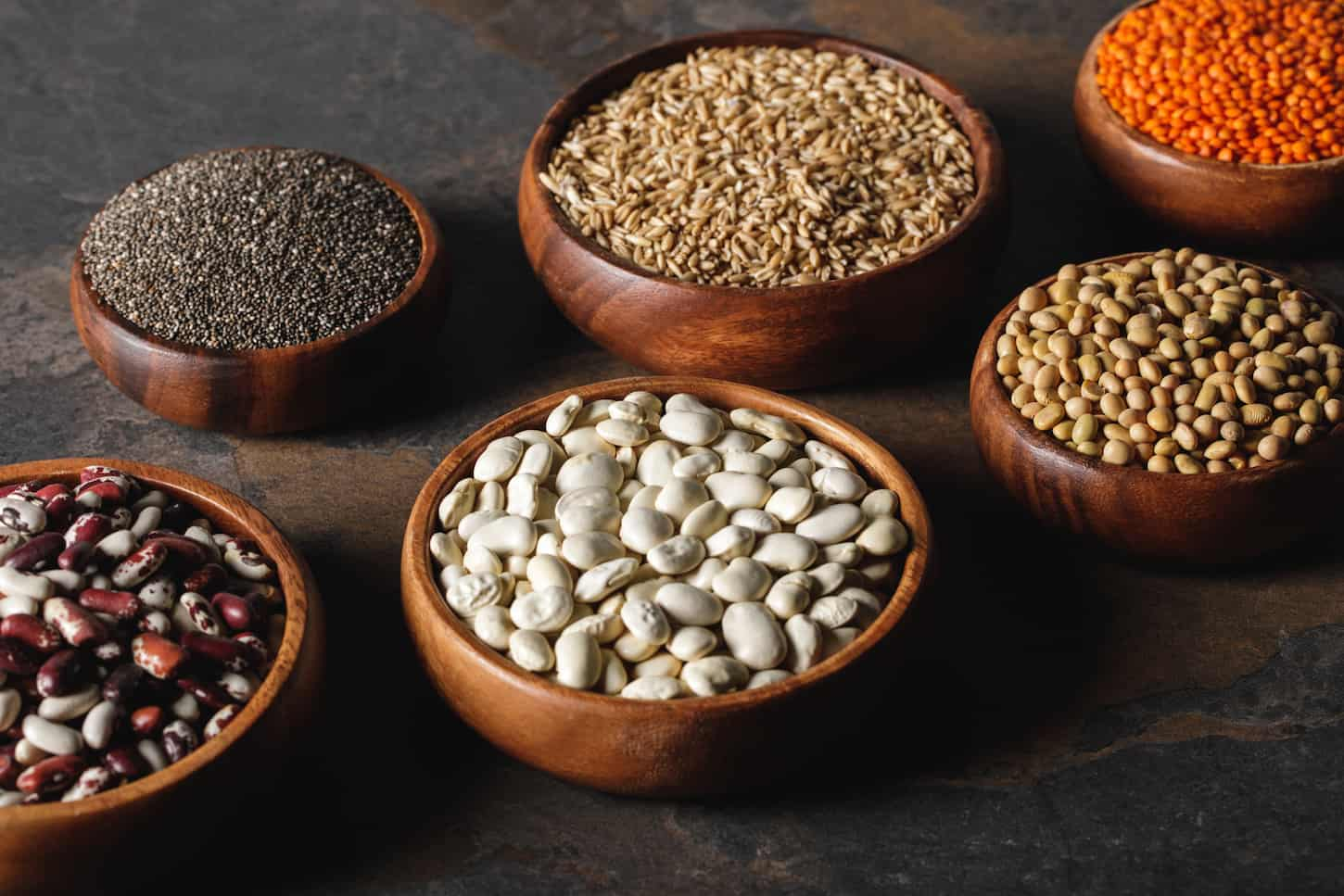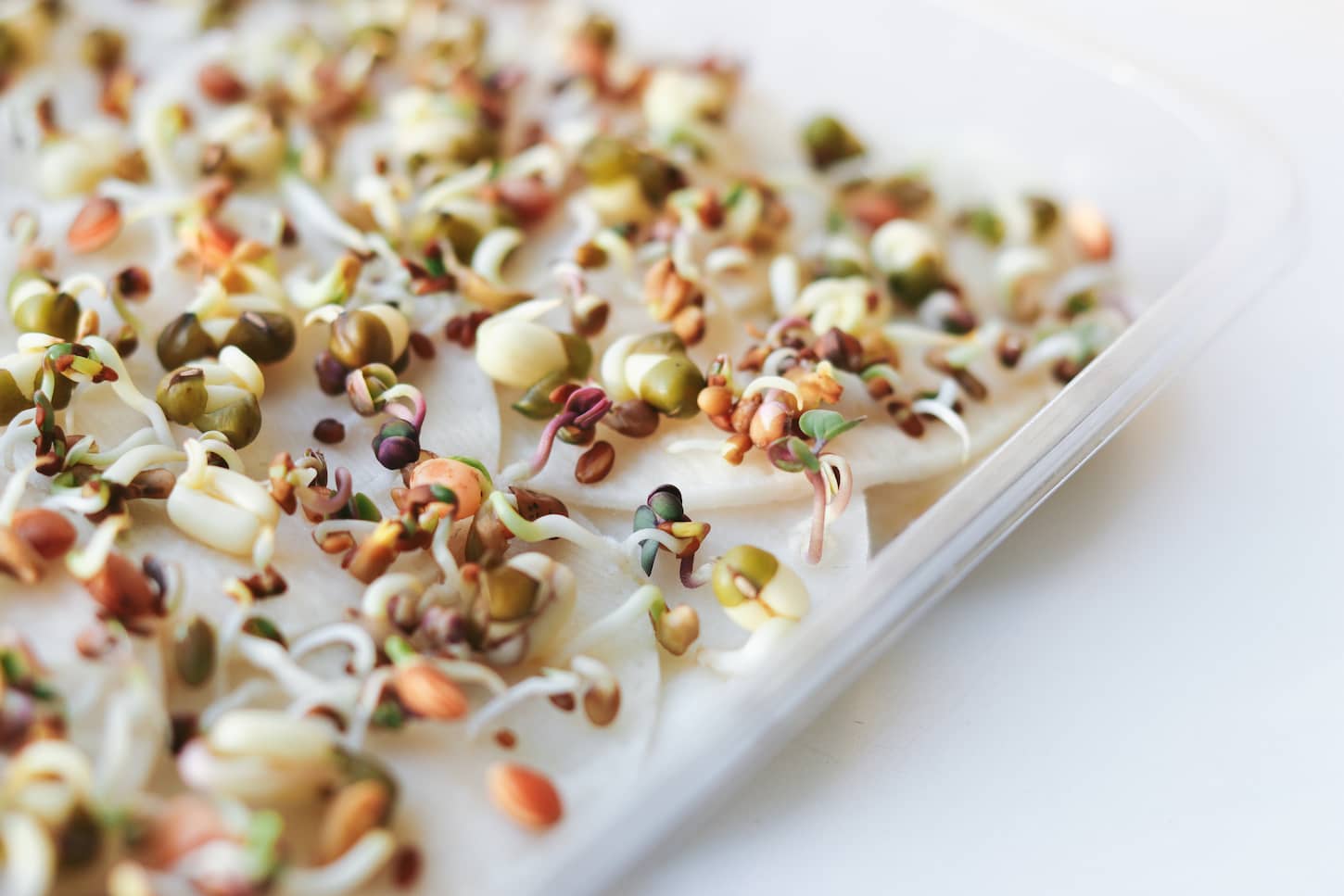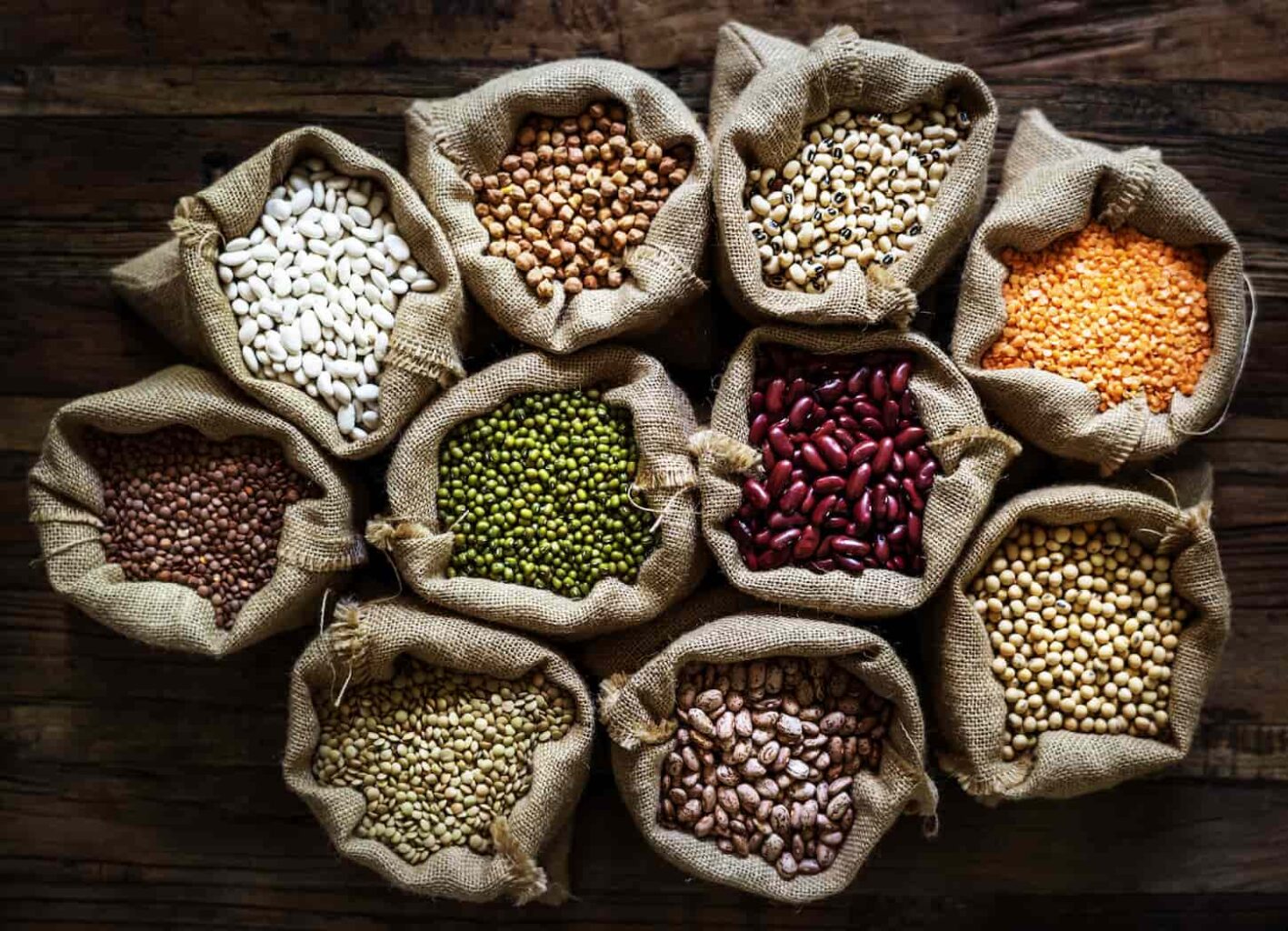Whether you’re collecting and storing heritage seeds or trying to keep new seeds for growing next year, storing seeds can be a fun or frustrating experience. This has made me wonder about using the freeze dryer to store seeds – and how that works.
Seeds can be freeze-dried and stored properly to extend their viability as food or to germinate and grow for up to several more years. Some seeds don’t require freeze-drying to still be viable for years, as long as they’re stored in a cool, dry, air-free environment.
Keen to find out more about freeze-drying seeds? Below, we’ll uncover the important things you need to know on how to freeze-dry your seeds the right way.

How to Freeze-dry Seeds
Seeds can be freeze-dried using the same general freeze-drying process as other foods. As long as the seeds are dry, they can be freeze-dried starting on any cycle (they do not need to be started on a frozen sequence) and should freeze-dry quickly.
Keep in mind that freeze-drying seeds may be overkill in most instances. Simply drying them may be more than enough.
Drying the seeds (before freeze-drying)
Your seeds must be dried out properly. This is to ensure that the seed’s walls do not expand and burst when frozen or freeze-dried. Water content in your seeds has a big influence on determining their storage life, so it’s vital that the seeds are dry before storing.
The ideal drying temperature is between 60 to 100 degrees Fahrenheit. Spread your seeds out on a piece of parchment paper in a well-ventilated place. Don’t forget to move them around slightly every day so that they dry evenly.
A food dehydrator (see which one we use and recommend here) can help dry out seeds, as it can reach extremely low-temperature settings, but it isn’t necessary. If you do use it, make sure that you don’t let it run for more than half an hour at a time to prevent cooking your seeds.
With forced airflow from a fan, small seeds can dry in 24 to 48 hours. Larger seeds, like pumpkin, can take around seven to 10 days.
Freeze-drying the seeds
Put your seeds on the freeze-dryer tray. They can be crowded as long as there’s enough room for airflow between the seeds.
Seeds can easily be done in a batch with other foods, though I’d recommend you keep seeds on a separate tray from other foods. Ideally, I’d also recommend you keep all seeds of one kind per tray. That way, you won’t forget which seed is which. Sorting seeds is so much fun! (not really).
Start your cycle and hit go.
Storing the Seeds
When the seeds are finally freeze-dried, it’s time to store them.
Wrap them in a paper towel and place them inside a zip-closure bag. Make sure all the air has been pressed out, and then place it inside another container, like a jar or rubber-sealed box. It might help to write down the seed type and date for inventory purposes!
You can also store your seeds in a Mylar bag if you want. The oxygen absorber is also optional. Personally, I think both of these are overkill. But I keep planting stuff, so my seeds don’t last long anyway. If you’re planning to wait several years between plantings of a particular plant, then freeze-dried and in a Mylar bag may be right for you.
Once everything’s all set, you can place your seeds in a cool and dark location – around 60 to 65 degrees Fahrenheit is optimum. Ensure that there will be no moisture around the seeds. To help with this, you can put it in a moisture-absorbing packet. Or you could add a few dried rice grains to your seed container to keep the humidity out.
If you have a large collection of seeds, you might consider investing in a cold storage device, like a wine fridge. Cold storage eases the process, as it’s temperature-controlled automatically. However, you might need to make some extra space in your home for this kind of equipment.
We’ve got a cold storage pantry, so we keep our seeds in there. No extra purchase is needed.
Can You Eat Freeze-Dried Seeds?
Freeze-dried, edible seeds can be eaten or planted to grow edible foods. Seeds that are edible will still be edible once freeze-dried and can be reconstituted or eaten freeze-dried. Powdering freeze-dried seeds is another great way to eat edible seeds.
Putting seeds away to freeze seems like a counterintuitive idea if you want to use them down the line. Contrary to what you may think, freeze-dried seeds can still germinate and grow healthy plants.
You can eat the fruits or vegetables that have grown from the seed that you freeze-dried. They’re essentially the same as regular seeds that haven’t been freeze-dried.

How Long Do Freeze-dried Seeds Last?
Seeds can be freeze-dried to lengthen their viability to germinate. Doing so may only add anywhere from a single year to 5-10 years of use. It will depend largely on the seed.
Freezing a product will generally extend its lifespan and the same applies to seeds. Those in good condition and stored correctly can last from at least one year to up to five years. The average shelf life of seeds will solely depend on the type of plant.
Look at the information below for the life expectancy of freeze-dried popular vegetable seeds (data from the University of California Agricultural and Natural Resources).
- Seeds that last 1+ years – Onions, parsnips, parsley, salsify, and spinach.
- Seeds that last 2+ years – Corn, peas, beans, chives, okra, and dandelion.
- Seeds that last 3+ years – Carrots, leeks, asparagus, turnips, rutabagas.
- Seeds that last 4+ years – Peppers, chard, pumpkins, squash, watermelons, basil, artichokes, and cardoons.
- Seeds that last 5+ years – Most brassicas, beets, tomatoes, eggplant, cucumbers, muskmelons, celery, celeriac, lettuce, endive, and chicory.
Freeze-drying is a process where something is dehydrated at a low temperature, which involves freezing the product, decreasing pressure, and using sublimation to remove the ice.
If properly stored, seeds can be kept for years. However, seeds should be thrown out if there are any visible signs of mold or mildew.
Best Seeds to Freeze-dry
There’s no conclusive list of the best seeds to freeze-dry – you can freeze-dry almost any seed you want. Whether you want to store flower seeds or vegetable seeds, the process is virtually the same. The same applies to seeds of all sizes – large or small seeds can be freeze-dried for years to come.
Keep in mind that the germination levels of seeds can slowly drop, making them less likely to produce a healthy plant. Although they don’t have a best-by date (like food), it’s best to stick closely to their shelf life mentioned above. The seeds don’t go immediately bad after passing that date, but the subsequent plant could be less than what you expect.
Will Freeze-dried Seeds Germinate?
Freeze-dried seeds can most certainly germinate – in fact, freeze-drying is an effective method of preserving seeds of all kinds. Freeze-drying seeds work and the thousands of seed banks around the world prove this. Take the Svalbard Global Seed Vault – the seeds can remain safe in their frozen condition for years.
Sometimes, you may not be sure if your seeds will germinate after it’s gone through a freeze-drying process. Here’s a quick test to see if your seeds will germinate.
- Count out a number of seeds for the test, from at least ten to around 100 hundred.
- Place the seeds on a damp paper towel.
- Fold the paper towel over the seeds. Ensure that the seeds don’t touch each other.
- Place the paper towel inside a plastic sandwich bag and into a warm place.
- Check-in on them every day for a week, spraying the paper with water to maintain moisture.
- Count how many seeds have germinated after the average germinated period of the plant.
- Calculate germination percentage by dividing the number of seeds germinated by the number of seeds tested.
- Compare germination percentage with the germination rate of the seed (which is usually on the packet label. If the rate is high, you’re good to plant.
Given that this is not a quick nor easy process, it’s easy to see why not a lot of homesteaders bother to keep a scientific log of how well their freeze-dried seeds germinated. Besides – most of us are planting them in the ground and not testing them on a damp paper towel.
But maybe some of us should handle that for you… Well, I’ve got a fun new YouTube video idea! Make sure you subscribe to my channel so you don’t miss the fun we have over there.
How do you Store Freeze-dried Seeds?
If you think freeze-drying seeds take up a lot of space at home, think again! They’re very easy to store and take up hardly any pantry room. Below are the essentials you’ll need to freeze-dry seeds:
- Zip-closure bag
- Paper towel
- Airtight and watertight container with rubber seal (e.g., Mason jar or baby food jar)
- A cool, dry, dark space below 50 degrees Fahrenheit (refrigerator or freezer can work)
- Moisture absorbing packets
You can store them in a sealed Mylar bag if you want, but a ziplock bag will probably be sufficient.

Final Thoughts
If you have a large collection of seeds that you definitely want to use further down the line, consider freeze-drying them. A simple process that only takes a few days can ensure that your seeds will still be able to germinate in the coming years. You won’t even need fancy equipment to freeze-dry – you may already have most or all of the things to get you going.
And now that you know everything about freeze-drying seeds, make sure you read this freeze-drying article next.
Resources
Learning from your own experience is essential, but learning from others is also intelligent. These are the sources used in this article and our research to be more informed as homesteaders.
- “Freeze-Dried Garden Seeds.” Harvest Right, https://harvestright.com/blog/2016/freeze-dried-garden-seeds/
- “Seed Viability (Or, Will Those Really Old Seeds in My Garage Germinate?)” Under the Solano Sun, https://ucanr.edu/blogs/blogcore/postdetail.cfm?postnum=12950
- .” Institute of Crop Germplasm Resources, https://www.bioversityinternational.org/fileadmin/bioversity/publications/Web_version/243/ch07.htm
- “Brief Communication: Freeze-Drying as an Alternative Method for Lowering Seed Moisture.” Association of Official Seed Analysts (Vol. 65), https://www.jstor.org/stable/23432554.
- “Long Term Storage of Seeds.” The Scientific Gardener, https://scientificgardener.blogspot.com/2013/02/long-term-storage-of-seeds.html.
- “Storing Seeds: How to Preserve Seeds for Years.” Epic Gardening, https://www.epicgardening.com/storing-seeds/.
